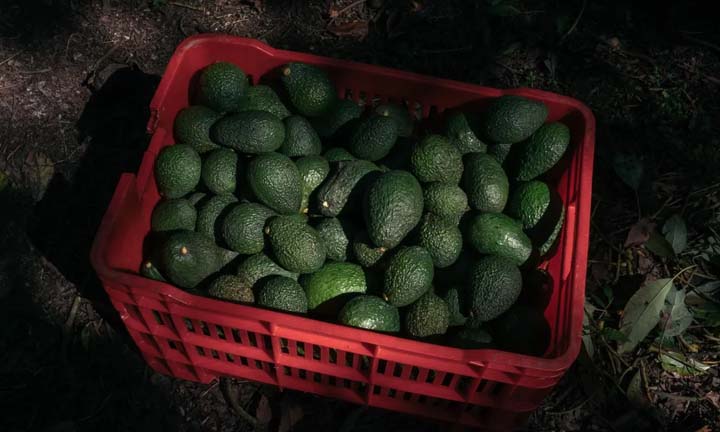By Maya Averbuch, Michael Hirtzer, and Leslie Patton, Bloomberg
Americans’ love of guacamole is about to be put to the test.
Mexico supplies upwards of 90% of the avocados Americans eat, and President Donald Trump is likely to make them more expensive with his plan to slap 25% tariffs on Mexican imports beginning on Saturday.
Prices for avocados are already up 14% from a year ago, even as overall produce costs are nearly flat, according to researcher NielsenIQ. More pressure is coming on Feb. 9 with the Super Bowl, which is by far the biggest day of the year for eating avocados in the US.
Avocados are so popular that they’ve become a “staple item” in the US, according to David Maloni, president of consulting firm Datum FS. This sets up what could be a telling case study on consumer behavior. Americans have few options for the green fruit, and have become even more reliant on Mexico in recent years.
Exacerbating the situation is that a drought in Mexico shrank this harvest and reduced the average size of the crop, meaning there are fewer of the large avocados that Americans prefer.
“This season was different,” said Humberto Solórzano, a producer in Michoacán state — the hub of Mexico’s avocado industry. “The fruit didn’t grow because of the drought, so there’s a very high price for the largest avocados, and extremely low prices for the smaller ones.”
The drought appears to be impacting imports. In the first four weeks of this year, Mexico’s avocado shipments into the US dropped 26% from the same period in 2024, according to farm lender Rabobank. Meanwhile, the price for a box of avocados more than doubled.
During Trump’s first term, just the threat of tariffs on Mexico caused one measure of avocado prices to climb. But levies were averted when the administration reached a deal with the Mexican government for it to crack down on migrants arriving at the countries’ shared border.
‘Some Worries’
“There are some worries in the industry that tariffs are going to be actually implemented,” said David Magaña, senior horticulture analyst at Rabobank. But given that tariffs on avocados didn’t happen in Trump’s first term, “it’s kind of a wait-and-see situation. At this time, they are not in a panic mode.”
Avocados From Mexico promotes the fruit in the US, including currently in a campaign with former NFL star Rob Gronkowski. It doesn’t sound worried. History shows that fluctuations in price haven’t changed demand, according to Álvaro Luque, the group’s chief executive officer.
“They’re willing to pay a premium,” Luque said of US consumers. “People are really in love with this fruit.”
Price hikes might be delayed a little because avocados can be kept in cold storage for six weeks before being consumed.
But the reprieve won’t last long. Americans’ reliance on Mexico for avocados increases in the winter months to roughly 95% of consumption because it produces year-round, according to the Avocados From Mexico group. Within the US, avocados are grown seasonally in California, Florida and Texas.
Limited Options
Outside of Mexico, there are only a few options for importing avocados. Chipotle Mexican Grill Inc. has sourced from other countries including Colombia and the Dominican Republic. Mariano’s, a grocery chain owned by Kroger Co., gets some of the fruit from Chile and Peru, according to Michael Marx, the company’s division president.
“Produce is a global business,” Marx said. “You are sourcing products from all over the world, and we are no different.”
Peru exports a small amount of avocados to the US, but its crop could be rerouted from Europe to the US, according to Gabriel Amaro, head of AGAP, the Peruvian industry group that represents agricultural firms.
“We hope the Mexicans overcome this impasse, but in the meantime Peru could supply the US market,” Amaro said. “It is very likely that this would be an opportunity.”

